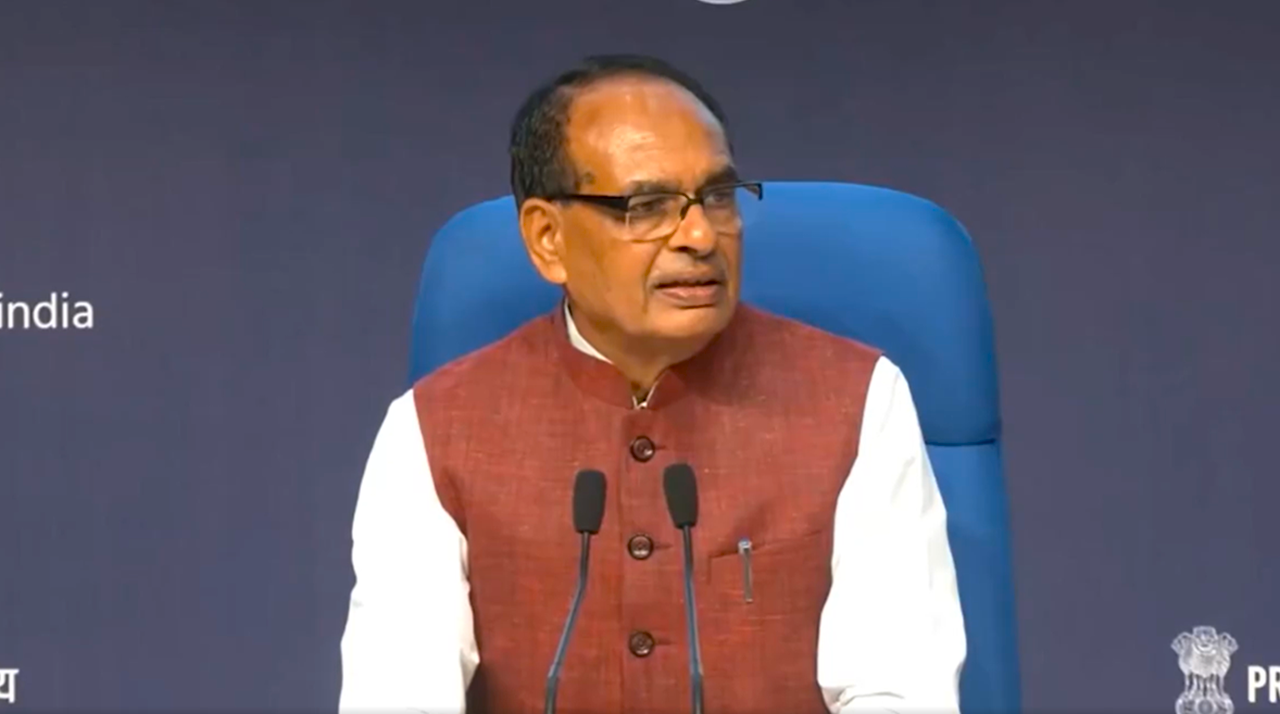
Union Minister for Agriculture and Farmers' Welfare Shivraj Singh Chouhan today highlighted the Ministry's noteworthy agricultural accomplishments in the first 100 days of Prime Minister Narendra Modi's third term in a press conference. The focus was on boosting agricultural productivity, reducing production costs, enhancing digital agriculture, and striking a balance in the export-import dynamics of agricultural commodities. Chouhan highlighted the government’s commitment to elevating the livelihoods of India's 140 crore citizens, with agriculture playing a pivotal role in the country's economy.
The Six-Point Strategy for Agricultural Development
At the heart of the government’s agricultural reforms is a six-point strategy aimed at driving growth and sustainability in the sector. The first point focuses on increasing agricultural productivity by enhancing crop yields per hectare. To achieve this, the government has introduced 109 new varieties of 65 crops, each designed to be climate-resilient, pest-resistant, and high-yielding. These new varieties promise to significantly increase agricultural output and reduce the risk of crop losses due to pests or adverse climatic conditions.
The second point addresses the reduction of production costs, a crucial factor in improving farmers’ income. A primary example is the government's subsidy program for fertilizers. While a bag of urea typically costs Rs 2366, farmers can purchase it for just Rs 266, thanks to government subsidies. Similarly, a bag of DAP (Di-Ammonium Phosphate), priced at Rs 2433 in the market, is made available to farmers at Rs 1350, easing their financial burden.
Digital Agriculture Mission and Modern Kisan Chaupal
One of the key highlights of the Ministry’s first 100 days is the launch of the Digital Agriculture Mission, aimed at modernizing Indian agriculture through technological integration. This mission includes the National Pest Surveillance System, which allows farmers to monitor pest infestations in real time and take preventive measures. Additionally, the government is set to launch the Modern Kisan Chaupal - Lab to Land initiative in October, where agricultural scientists will provide direct guidance to farmers. This initiative will bridge the gap between scientific research and practical agricultural practices.
PM-KISAN and AI Chatbots
Among the government's flagship schemes is the Pradhan Mantri Kisan Samman Nidhi (PM-KISAN), under which ₹21,000 crore was released to over 9.26 crore farmers in the last 100 days. Through saturation drives, an additional 25 lakh farmers were enrolled, bringing the total beneficiaries to 9.51 crore. This financial support is crucial for improving the livelihoods of farmers across the country.
To further assist farmers, the Ministry has employed a voice-based AI chatbot called Kisan-eMitra. Available in multiple languages, this AI tool has so far resolved more than 82 lakh queries from 50 lakh farmers. The chatbot’s services are now being expanded to cover other major schemes such as the Kisan Credit Card (KCC) and the Pradhan Mantri Fasal Bima Yojana (PMFBY), enhancing its role in supporting farmers across various government programs.
Recent Agricultural Trade Reforms: Onions, Basmati Rice, and Edible Oils
The government has also implemented critical reforms in agricultural trade policies. The Minimum Export Price (MEP) for onions has been removed, and the export duty has been reduced from 40% to 20%, benefiting onion farmers by facilitating better market access. Similarly, for Basmati rice, the MEP of $950 per metric tonne has been scrapped, allowing Indian exporters to be more competitive internationally. These decisions are expected to increase demand and fetch higher prices for Indian farmers.
In response to falling global prices of edible oils, the government raised import duties on crude palm, soya, and sunflower oils from 5.5% to 27.5%. The import duty on refined oils was also increased to 35.75%. These measures aim to stabilize domestic prices and protect local oilseed farmers from external price shocks.
Pradhan Mantri Annadata Aay Sanrakshan Abhiyan (PM-AASHA)
To safeguard farmers' incomes and ensure stable prices, the government has continued the Pradhan Mantri Annadata Aay Sanrakshan Abhiyan (PM-AASHA) scheme. With a budget outlay of ₹35,000 crore until the 2025-26 fiscal year, the scheme provides remunerative prices to farmers and minimizes price volatility for consumers. Components like the Price Support Scheme (PSS), Price Stabilization Fund (PSF), and Market Intervention Scheme (MIS) are designed to cushion farmers against market fluctuations.
For specific crops, such as pulses and oilseeds, the government has increased the procurement ceiling to 25% of national production, allowing more farmers to sell their produce at the Minimum Support Price (MSP). For crops like Tur, Urad, and Masoor, the procurement limit has been lifted entirely for the 2024-25 season, incentivizing farmers to increase production.
Kharif Season Initiatives and Market Intervention Scheme (MIS)
To ensure remunerative prices for farmers during the ongoing Kharif season, the government has approved the procurement of key crops like soybean, urad, moong, and sunflower in multiple states. The Market Intervention Scheme (MIS) has been modified to allow interventions when market prices fall by only 10% compared to the previous year, giving the government more flexibility in addressing price drops.
Digital Agriculture Mission
One of the most ambitious programs introduced by the government is the Digital Agriculture Mission, which aims to create a Digital Public Infrastructure (DPI) for agriculture. With a budget of Rs. 2,817 crore, this mission will provide farmers with digital identities, known as Farmer IDs, and enable digital crop surveys nationwide. By 2026-27, 11 crore farmers will have access to various digital services, such as loans and insurance, without the need for physical documentation. This initiative will not only streamline agricultural processes but also offer policymakers valuable data for better planning.
Empowering Rural Women: Krishi Sakhis
The Ministry has launched a unique initiative to train Krishi Sakhis—women farmers who will act as para-extension workers. These women, after undergoing training in areas like soil health, livestock management, and natural farming, will earn around INR 50,000 annually. This initiative aligns with the broader "Lakhpati Didi" program, which aims to improve the incomes of rural women and empower them economically.
Agricultural Infrastructure and Farmer Producer Organizations (FPOs)
The government has also expanded the Agriculture Infrastructure Fund (AIF), which offers debt financing for post-harvest management and community farming assets. With a target of Rs. 1 lakh crore in disbursements by FY 2025-26, this initiative is expected to create significant infrastructure across rural India. Already, Rs. 48,500 crore has been sanctioned for over 76,400 projects, generating jobs and improving storage capacities.
The establishment of Farmer Producer Organizations (FPOs) is another key aspect of the government’s agricultural reforms. FPOs benefit from group discounts on inputs and enhanced market efficiency. Additionally, the Open Network for Digital Commerce (ONDC) allows FPOs to sell directly to consumers across the country, expanding their market access.
The government aims to ensure sustainable growth in the sector by increasing production, reducing costs, leveraging technology, and reforming agricultural trade policies. Key schemes like PM-KISAN, PM-AASHA, and the Digital Agriculture Mission underscore the government's commitment to improving the livelihoods of Indian farmers and making the country’s agricultural sector more resilient and self-reliant.










